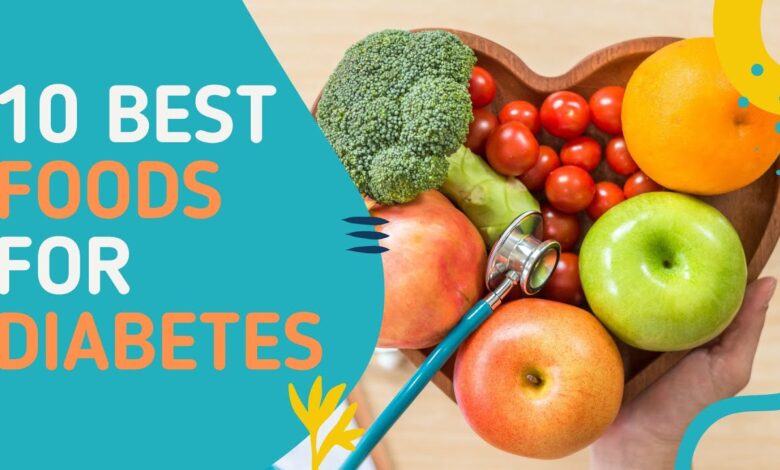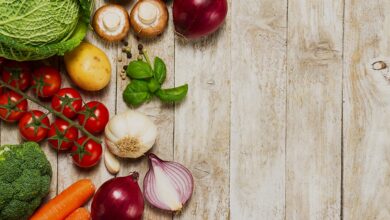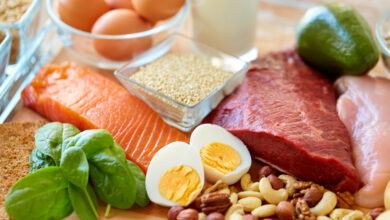
Diabetes has become one of the most pressing health concerns in Africa, Europe, and across the globe. Millions of people live with either type 1 or type 2 diabetes, and the numbers are still climbing due to sedentary lifestyles, poor diets, and increased sugar consumption. The good news? While diabetes can’t always be prevented or reversed, it can be managed effectively through smart lifestyle choices, especially food. That’s where the ketogenic (keto) diet comes into the picture.
The keto diet emphasizes low-carb, moderate-protein, and high-fat eating, pushing the body into a state called ketosis. In ketosis, your body burns fat instead of carbs for energy, which is a game-changer for diabetics. Why? Because carbs are the main culprit behind blood sugar spikes. By cutting them drastically and replacing them with healthy fats and proteins, keto helps stabilize glucose levels and reduce dependency on medications for many patients.
In this article, we’ll explore 10 keto-friendly foods that are not only delicious but also scientifically proven to help manage diabetes. Each food is packed with nutrients, supports stable energy, and can be incorporated into daily meals without feeling deprived.
Why Keto Foods Work for Diabetes
The logic behind keto foods and diabetes management is simple but powerful. Normally, when you eat carbs, they get broken down into glucose, which raises blood sugar. In response, the pancreas produces insulin to move that sugar into cells. For people with diabetes, either the body doesn’t make enough insulin (type 1) or the cells resist it (type 2), leading to high glucose levels.
By eating keto-friendly foods, you drastically reduce carb intake. This means there’s less sugar to spike your blood glucose and less demand on your pancreas to pump out insulin. Over time, this improves insulin sensitivity, reduces HbA1c levels (a marker of long-term glucose control), and lowers the risk of diabetes-related complications like heart disease, kidney issues, and nerve damage.
But keto isn’t just about cutting carbs—it’s about eating smarter. The 10 foods we’ll discuss are carefully chosen because they:
- Stabilize blood sugar
- Provide essential nutrients
- Reduce cravings and promote satiety
- Support heart and overall health
Let’s dive in.
1. Avocados – The Diabetes Superfruit
If there’s one food that deserves the title “superfood” in diabetes management, it’s the avocado. Unlike most fruits, avocados are low in carbs and high in healthy fats and fiber. This makes them perfect for a keto lifestyle and especially valuable for people with diabetes.
One medium avocado provides around 9 grams of fiber and only 2 grams of net carbs. The fiber slows digestion, preventing rapid spikes in blood sugar after meals. The healthy monounsaturated fats help improve insulin sensitivity while supporting heart health—a crucial factor, since diabetics face a higher risk of cardiovascular problems.
Avocados are also rich in potassium, folate, and magnesium, nutrients essential for nerve health, blood pressure regulation, and energy metabolism. Whether you mash it into guacamole, slice it onto salads, or blend it into smoothies, avocados are versatile and satisfying.
Pro tip: Pair avocados with eggs or salmon for a nutrient-dense, diabetes-friendly breakfast that keeps you full for hours.
2. Fatty Fish – Omega-3s for Insulin Sensitivity
Fish like salmon, sardines, mackerel, and tuna are staples in keto and diabetes diets. These fatty fish are packed with omega-3 fatty acids (EPA and DHA), which are known to reduce inflammation, improve insulin sensitivity, and lower triglyceride levels. For diabetics, this is a triple win.
Inflammation plays a major role in insulin resistance and diabetes complications. By consuming fatty fish at least twice a week, you can fight this inflammation and protect your cardiovascular system. Studies also show that people who regularly eat fish have lower risks of heart disease—a top concern for diabetics.
Apart from omega-3s, fish is a fantastic source of high-quality protein. Protein slows down digestion, keeps you full longer, and prevents unnecessary snacking that could raise blood sugar.
Grilled salmon drizzled with olive oil and served with leafy greens is a keto-friendly dinner that’s both delicious and therapeutic.
3. Eggs – The Perfect Protein
Eggs are often called “nature’s multivitamin,” and for good reason. They’re loaded with protein, vitamins (B12, D, and choline), and minerals, all while being virtually carb-free. For diabetics, this means eggs provide stable energy without triggering glucose spikes.
The protein and fat combo in eggs slows digestion and promotes satiety. Eating eggs for breakfast, for instance, helps reduce appetite throughout the day—making it easier to stick to a low-carb, diabetes-friendly diet.
Moreover, eggs contain antioxidants like lutein and zeaxanthin, which protect eye health. Since diabetes increases the risk of vision problems like diabetic retinopathy, adding eggs to your meals is a smart preventive step.
Whether boiled, scrambled, poached, or baked into a veggie omelet, eggs are affordable, versatile, and perfect for diabetes management.
4. Leafy Greens – Low-Carb Fiber Powerhouses
Spinach, kale, collard greens, and Swiss chard are among the healthiest foods on the planet. They’re nutrient-dense, low in carbs, and high in fiber—making them ideal for diabetics on a keto plan.
Leafy greens provide magnesium, which plays a role in insulin function and glucose regulation. They’re also rich in antioxidants like vitamin C and beta-carotene, which reduce oxidative stress. Since diabetics are more prone to cellular damage, this antioxidant protection is essential.
Another advantage? Leafy greens are extremely low in calories, meaning you can eat them in abundance without worrying about weight gain. And because weight management is key in controlling type 2 diabetes, leafy greens are an unbeatable ally.
Try sautéing spinach in olive oil, adding kale to soups, or enjoying collard greens with a sprinkle of nuts for a hearty, diabetes-friendly dish.
5. Nuts and Seeds – Smart Snacks for Blood Sugar Control
If you often crave snacks between meals, nuts and seeds are your best keto-friendly option. Almonds, walnuts, chia seeds, and flaxseeds provide healthy fats, protein, and fiber—all of which help regulate blood sugar.
Research shows that eating nuts can lower HbA1c levels and fasting glucose in people with diabetes. Almonds, for example, are packed with magnesium, which helps your body use insulin more effectively. Walnuts contain alpha-linolenic acid (ALA), a plant-based omega-3 that supports heart health.
Seeds like chia and flax are fiber bombs. They slow digestion, keep you full, and promote better bowel health. For diabetics, fiber is critical because it reduces post-meal glucose surges.
Sprinkle seeds into smoothies, add nuts to salads, or enjoy them as a crunchy snack. Just remember moderation—while keto-friendly, nuts are calorie-dense.
6. Olive Oil – Heart-Healthy Fat
Olive oil, especially extra virgin olive oil, is a staple of the Mediterranean diet, which is praised for its heart and diabetes benefits. Its monounsaturated fats improve insulin sensitivity, while its antioxidants (polyphenols) reduce inflammation and oxidative stress.
For diabetics, incorporating olive oil into meals helps lower fasting blood sugar and improves cholesterol levels, reducing the risk of cardiovascular disease. Unlike vegetable oils that can increase inflammation, olive oil is stable and nutrient-dense.
Use it in salad dressings, drizzle over roasted vegetables, or sauté fish and leafy greens with it. Olive oil is one of the safest, most effective fats for diabetics.
7. Cheese – A Low-Carb Dairy Delight
Cheese is often misunderstood in the health world, but for keto and diabetes, it’s a valuable food. Rich in fat, moderate in protein, and extremely low in carbs, cheese helps promote satiety without raising blood sugar.
Studies suggest that dairy fat may reduce the risk of type 2 diabetes and support metabolic health. Cheese is also a source of calcium, vitamin D, and protein, all of which contribute to stronger bones and better muscle function.
Options like cheddar, mozzarella, and cottage cheese are keto-friendly and widely available in both Africa and Europe. Just keep portions moderate, since cheese is calorie-dense.
8. Berries – Sweet but Safe
For diabetics, most fruits are tricky due to their sugar content. But berries—strawberries, blueberries, and raspberries—are exceptions. They’re lower in sugar and higher in fiber, making them safe in moderation.
Berries are also rich in antioxidants like anthocyanins, which reduce oxidative stress and inflammation, two major contributors to diabetes complications. They also provide vitamin C, which boosts immunity and supports skin health.
Instead of reaching for sugary desserts, diabetics can satisfy their sweet tooth with a small bowl of berries and Greek yogurt. It’s tasty, refreshing, and won’t derail blood sugar control.
9. Coconut Oil – Metabolism Booster
Coconut oil is another excellent fat source for diabetics on keto. It contains medium-chain triglycerides (MCTs), which are metabolized quickly and used for energy rather than stored as fat. This helps improve insulin sensitivity and supports ketosis.
Coconut oil also provides antimicrobial properties, supporting gut health. Since gut bacteria play a role in metabolism and glucose regulation, keeping your digestive system healthy indirectly benefits diabetes management.
Use coconut oil for cooking, add it to coffee, or blend it into smoothies for an energy boost.
10. Cauliflower – The Low-Carb Staple
Cauliflower has become the “poster vegetable” of keto diets—and for good reason. It’s incredibly versatile and can replace high-carb foods like rice, potatoes, and even pizza crust.
Cauliflower is rich in fiber, vitamin C, and antioxidants. It supports digestion, boosts immunity, and prevents rapid glucose increases after meals. For diabetics, replacing starchy staples with cauliflower is one of the simplest ways to control carbs without feeling deprived.
Mashed cauliflower instead of mashed potatoes or cauliflower rice instead of white rice are practical swaps that can transform your diet.
Table: Keto Foods vs Blood Sugar Benefits
| Keto Food | Nutrient Highlight | Diabetes Benefit |
|---|---|---|
| Avocados | Fiber, healthy fats | Stabilizes blood sugar, supports heart health |
| Fatty Fish | Omega-3 fatty acids | Improves insulin sensitivity, reduces inflammation |
| Eggs | Protein, B vitamins | Satiety, stable blood sugar |
| Leafy Greens | Fiber, magnesium | Prevents glucose spikes, antioxidant protection |
| Nuts & Seeds | Healthy fats, protein | Lowers HbA1c, reduces fasting glucose |
| Olive Oil | Monounsaturated fats | Improves insulin function, heart protection |
| Cheese | Protein, fat | Low-carb satiety, supports metabolism |
| Berries | Fiber, antioxidants | Safe sweet option, reduces oxidative stress |
| Coconut Oil | MCTs | Boosts metabolism, supports ketosis |
| Cauliflower | Fiber, vitamins | Replaces high-carb staples, regulates sugar |
Conclusion
Managing diabetes isn’t about strict restrictions; it’s about smart food choices. The 10 keto foods we’ve explored—avocados, fatty fish, eggs, leafy greens, nuts, olive oil, cheese, berries, coconut oil, and cauliflower—are not just keto-friendly, they are diabetes-friendly superfoods.
They help stabilize blood sugar, support heart health, and provide long-lasting energy. Whether you live in Lagos, London, or Lisbon, these foods are widely accessible and easy to add to your meals.
Start small. Swap rice with cauliflower, add avocado to your breakfast, or include salmon in your dinner rotation. Over time, these small, consistent changes will make a massive difference in your blood sugar control and overall quality of life.
Read Also High-Protein Keto Foods That Burn Fat and Build Muscle Naturally
FAQs
1. Can the keto diet reverse diabetes?
No, keto cannot “cure” diabetes, but it can help manage symptoms, improve insulin sensitivity, and reduce reliance on medication.
2. Are keto foods safe for type 1 diabetes?
Yes, but medical supervision is critical. People with type 1 diabetes face risks like ketoacidosis, so a doctor must monitor closely.
3. How soon can I see results from eating keto foods?
Some people see improvements in blood sugar within weeks, while long-term benefits (like HbA1c reduction) take a few months.
4. Can I eat keto foods with my prescribed medication?
Yes. In fact, doctors often recommend pairing diet with medication. But always consult your physician before making changes.
5. Is eating keto expensive in Africa or Europe?
Not necessarily. Affordable keto foods include eggs, leafy greens, nuts, and locally available fish. Processed “keto” products, however, can be costly.





One Comment